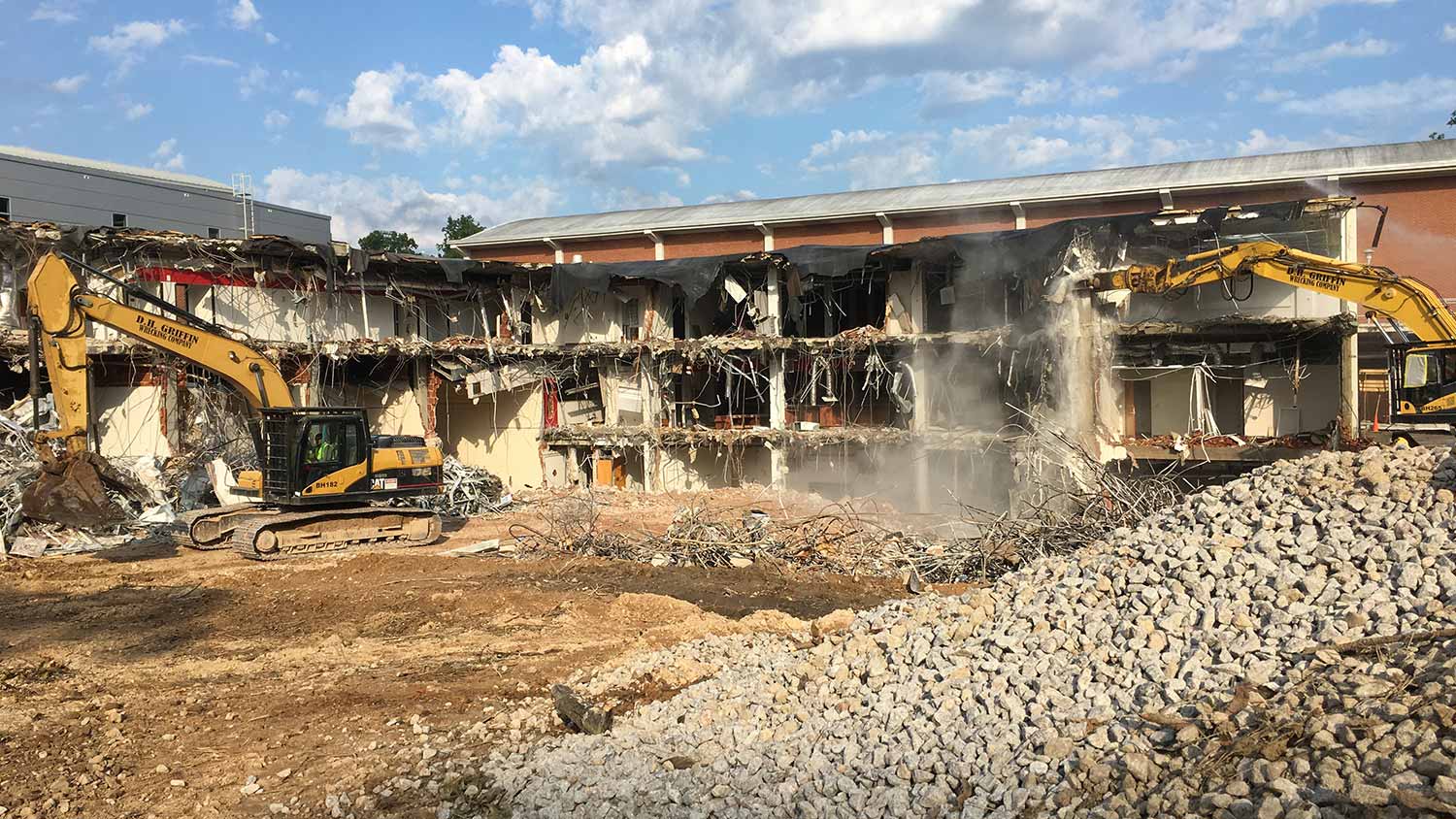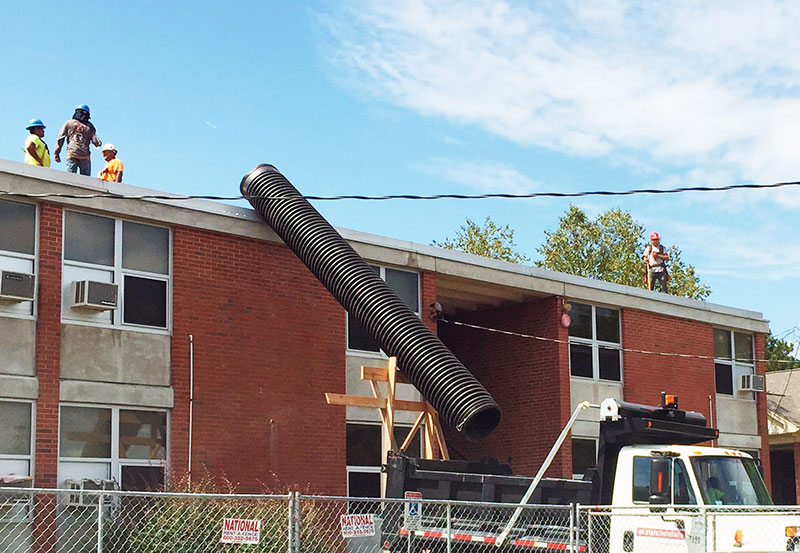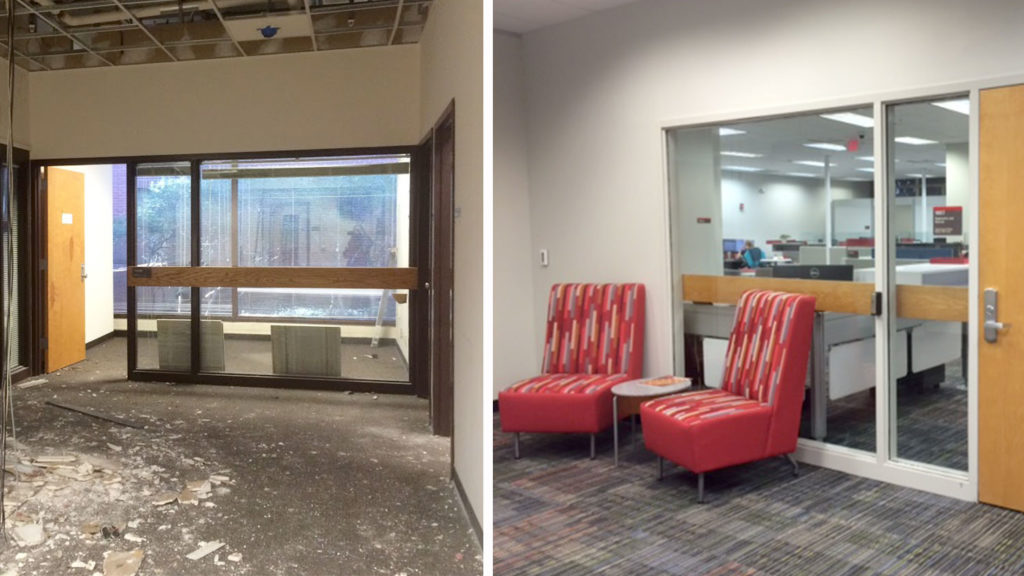Finding New Life For Resources

Months before the steel beams of NC State’s new Wellness and Recreation Center began rising, the decades-old Carmichael Administration Building was removed – but not in typical demolition style.
NC State’s commitment to stewardship and sustainability prevented 96% of the former building’s non-hazardous materials from entering local landfills. An extensive waste management plan ensured these materials were recycled or reused.
“We’re committed to diverting as much waste as possible from landfills,” said Adam Bensley, a waste diversion coordinator with NC State’s Waste Reduction and Recycling Office.
Reaching 70 Percent
Waste from campus construction and renovation projects is an important part of NC State achieving its goal to divert 70 percent of campus waste from landfills by 2022. As a result, more and more campus construction and renovation projects are creating waste management plans to identify reusable or recyclable materials.
“We try to reuse what we can on campus first,” Bensley said. “Then we use the university’s surplus property services next. If that’s not a match, we try diverting the materials with local nonprofits that can use the items.”
This strategy is applied to materials ranging in size from large concrete slabs to cabinet fixture pulls. Scrap metal can be resold. Concrete and asphalt can be crushed and recycled. Carpet tiles that are in good condition can be utilized in another building.
Connecting Projects, Resources
Often waste diversion efforts involve a mix of creativity and collaboration with many departments on campus, Bensley said.
During a roof replacement at E.S. King Apartments, Waste Reduction and Recycling worked with the College of Natural Resources to relocate more than 70 tons of roof gravel to nearby Schenck Forest, where the material now lines ditches and paths. The forest also gained several benches that were relocated after a renovation at Case Dining Hall.

During the demolition of three buildings in Greek Village, crews salvaged furniture and other fixtures for reuse. From a Varsity Labs renovation, reclaimed material included cabinets, shelves, appliances, handrails and water fountains.
“Any time we divert material away from the landfill it saves money. With reuse, you save double. You avoid the landfill tipping fee and the purchase price for the new item,” Bensley said.
When campus classrooms are renovated to incorporate new teaching methods and learning styles, materials are carefully inventoried to avoid waste. According to Lisa Keel, who manages classroom renovations, sometimes chairs can be relocated to another space, as can carpet tiles, whiteboards and other supplies.
Partial reuse is also a strategy. Recently in two large lecture hall classrooms with auditorium-style seating, worn seat cushions were replaced without incurring the additional waste and expense of replacing the entire chair.
“We’re always doing our best to improve the teaching experience while being a good steward of resources,” she said.

- Categories: